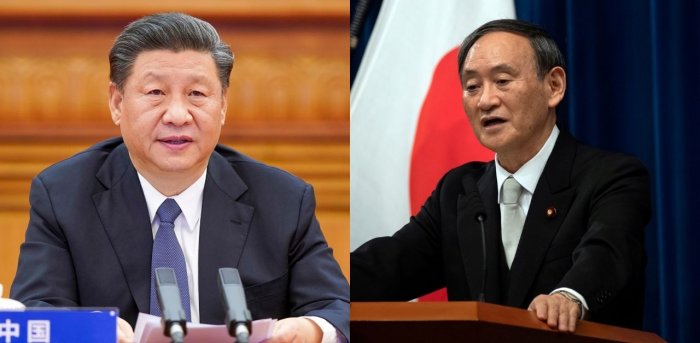Japan has been giving sleepless nights to Xi Jinping, and it seems that things are only going to get worse for Beijing going ahead. While Japan was already increasing its pressure on China strategically as well as by increasing its military partnership, now it has developed a genius way to reduce the dependence of many countries on Chinese supply chains. Japan along with six other Asia-Pacific economies are nearing completion of a cross-border trade network that would eventually provide 5,000 businesses with instant internet access to suppliers throughout the region, reducing the problems caused by supply chain disruptions.
Businesses must be prepared to respond rapidly to exigencies, as the world has seen how things can be disrupted, credit to the belligerent actions of China in the pandemic ridden world. Whether it’s leaning too heavily on one country for critical medical supplies, a sudden closing of borders and shipping routes, or an unplanned trade war. Now Japan has come up with a plan to utilise blockchain as a tool to kill two birds with one stone. While it will decrease the time it takes for approvals with removing paperwork, and at the same time, it will provide real-time alternatives to the goods coming from China, helping countries move away from China’s supply chain dependency.
Companies that use the cross-border platform will record commodities, distribution routes, and import and export transactions. Other participants will be able to search that data, making it easier to choose the perfect product in no time. As explained by the Nikkei Asia report, if unforeseen supply disruptions occur, a participating company can quickly look for replacement sources via the system. For example, if imports of Chinese masks were to dry up, a business can decide if there are alternative suppliers available in real-time.
The impact of this could be best understood if we take the trade spat between Australia and China. In the absence of any such system, China tried to bully Australia by utilizing its monopoly over the consumption of Australian exports for geopolitical issues. At that moment, it took a long time for Australia to create alternative channels of supply chains to offset the impact of China’s blockade of Australian exports.
Six other economies that will be linked to the network account for approximately 20% of Japanese trade. With the platform’s complete implementation, that share could climb. The network’s digitization of trading paperwork is expected to stimulate commerce for Japanese enterprises. And this will happen at the cost of Chinese trade and will surely divert the supply chains away from the shores of China to these seven countries.
The Japanese economic offensive against the Chinese seems to be going on with a turbo boost. Earlier in 2020, Tokyo had set up a fund to support countries monetarily to move out of China to countries like India and Vietnam as well as some Southeast Asian countries too. This is coupled with the geopolitical offensive of Japan against China. Recently, Japan’s Deputy Prime Minister Taro Aso has spelt out his country’s policy in the event of a Chinese invasion over Taiwan. While delivering a speech in Tokyo on 5th July, Japan’s second-in-command was quoted as saying, “If a major incident happened (over Taiwan), it’s safe to say it would be related to a situation threatening the survival (of Japan). If that is the case, Japan and the U.S. must defend Taiwan together.”
Read more: If China attacks Taiwan, Japan will attack China
TradeWaltz started a test run last year with about 20 Japanese participants. The count is projected to climb to 450 Japanese companies by 2025. The entire seven-economy network would include 5,000 businesses by the middle of the decade.
As per the same report, a joint venture by the same name will operate TradeWaltz. NTT Data, Mitsubishi Corp., MUFG Bank, and Tokio Marine & Nichido Fire Insurance are among the seven Japanese corporations that have invested in the company. Participating companies will pay usage fees to the joint venture. In addition to this, the company is exploring partnering with a platform in the United States. This goes on to show that, in the coming years as these efforts succeed, the ecosystem may encompass other countries as well, removing China’s monopoly entirely.
